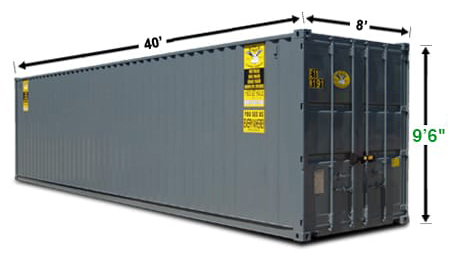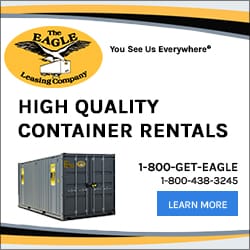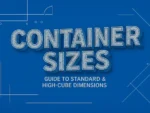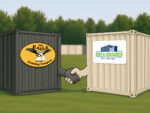Choosing the Right Container: The Key Takeaways
Choosing the right container rental depends on the amount and type of stuff you need to store, the available space on-site, and how long you’ll need it. Typical sizes range from 8’ to 40’, suited for everything from moving essentials to full household or jobsite gear. Find it all here in this container rental guide.
Introduction
When planning a storage container rental, selecting the right size is crucial. An undersized container won’t fit everything; an oversized one wastes money and space. In this container rental guide, we’ll walk you through common container sizes, help match them to your needs, and share tips for hassle‑free temporary storage solutions.
Common Container Sizes & Ideal Uses
8’ Container
- Dimensions: ~8′ L × 8′ W × 8’6″ H
- Best for: small apartment move, single-room clear-outs, tool/equipment storage
- Tip: fits in tight driveways and alongside buildings
10’ Container
- Dimensions: ~10′ L × 8′ W × 8’6″ H
- Best for: 1–2 rooms, seasonal gear storage, landscaper tools
- Tip: easier to position than larger units, fits most urban properties
20’ Container
- Dimensions: ~20′ L × 8′ W × 8’6″ H
- Best for: 3–4‑bedroom home move, office renovation, large-scale storage
- Tip: consider “high-cube” for extra 1-foot height—great for tall items
40’ Container
- Dimensions: ~40′ L × 8′ W × 8’6″ H (or high‑cube option for more height)
- Best for: large estates, commercial equipment, long‑term jobsite storage
- Tip: ensure drop-off site can accommodate the size and weight
How to Choose the Right Size
- Inventory Your Items – List furniture or equipment, noting bulky versus compact items.
- Estimate Volume – Rule of thumb: 20’ container = ~1,100 cu ft; 40’ = ~2,300 cu ft.
- Plan for Space & Access – Leave 2–3 feet for aisles. Confirm container placement fits local regulations.
- Duration Matters – Short-term rentals favor smaller, easier-to-move containers; long-term jobsites may benefit from larger units.
Temporary Storage Container Tips
- Label Boxes Clearly – Helps with organization inside the container.
- Protect Floors – Use plywood sheets to avoid damage when loading heavy gear.
- Ventilate When Needed – Use vents or tarps to prevent moisture buildup.
- Schedule Smart – Coordinate delivery/pickup times to minimize disruptions on your property.
Quick Reference: Match Size to Use‑Case
| Use Case | Best Size | Why |
|---|---|---|
| Small studio move | 8’ or 10′ | Sufficient for a room of furniture, fits tight spaces |
| 2–3 bedroom home | 20’ | Can hold appliances, furniture, boxes comfortably |
| Large property or jobsite | 40’ | High capacity, ideal for tools and extra inventory |
Frequently Asked Questions
1. What’s the difference between standard and high‑cube containers?
High‑cube models add about 1 ft of height (~9’6″)—great for taller items like sofas or shelving units.
Want a deeper breakdown? This article from Rent-A-Container covers exactly how standard and high-cube containers differ, and which one is right for you.
2. Do I need insurance for a rented container?
Yes. Use your homeowners or commercial policy—or purchase coverage through Eagle Leasing—to protect against weather, theft, or damage.
3. Can I relocate a container mid‑rental?
Absolutely*. Contact us to schedule a transfer—just make sure new space is level and accessible.
4. How do I prepare my site for a container drop-off?
Provide a firm, level surface (gravel, pavement) and clear overhead space. For 40’ containers, you’ll need ~50’ of clear length.
5. Are container deliveries noisy or disruptive?
Deliveries typically take 10–20 minutes. We’ll plan timing together to avoid peak activity on your property.
Conclusion & Next Steps
Using this Container Rental Guide, and choosing the right container size helps optimize your project efficiency and costs. Start by taking inventory and measuring your space. If you’re unsure, reach out to our Eagle Leasing experts—we’ll recommend the perfect size and handle logistics from delivery through pickup.
Contact us or get a quote today to get a customized quote and book your rental.
For general moving tips, the U.S. Federal Highway Administration provides great guidance on vehicle loading and weight limits.
*Containers must be empty to be moved by Eagle Leasing.












